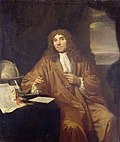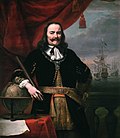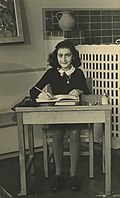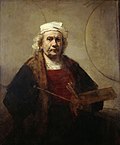| Rank | Personality | Notability | Nomination defended by | Ref. |
|---|
| 1 |  | Pim Fortuyn | Politician. Admired by his followers for breaking with political correctness and criticizing Dutch politics. His murder made him a martyr for his case. His high position in the list was affected by the murder of Theo van Gogh only a few days before the contest was held. The program later revealed that William of Orange had received the most votes, but many could not be counted until after the official closing time of the television show (and the proclamation of the winner), due to technical problems. The official rules of the show said that votes counted before the end of the show would be decisive, but it was suggested that all votes correctly cast before the closing of the vote would be counted. Following the official rules, the outcome was not changed. [2] | Yoeri Albrecht, journalist. [3] | [4] |
| 2 |  | William of Orange | Politician. Led the Dutch people during the Eighty Years' War against Spain, which eventually led to their independence. He himself never lived to see this, as he was assassinated. Is considered the "Father of the Nation" to this day. | Jacobine Geel, theologist, TV presenter and columnist. [3] | [4] |
| 3 |  | Willem Drees | Prime Minister (1948–1958). Re-elected four times in a row. Admired for helping the post-war country to get back on its feet and for his introduction of various social reform laws. | Wouter Bos, Dutch politician. [3] | [4] |
| 4 |  | Antonie van Leeuwenhoek | Biologist and microbiologist. Inventor of the microscope. Did pioneer work in cell biology and microbiology. | André Kuipers, astronaut. [3] | [4] |
| 5 |  | Desiderius Erasmus | Philosopher and novelist. Author of In Praise of Folly . Admired for his humanist philosophies. | Herman Pleij, medievalist. [3] | [4] |
| 6 |  | Johan Cruyff | Association football player and trainer. Universally considered to be one of the greatest and most influential football players of all time. | Michael van Praag, association football trainer and administrator. [3] | [4] |
| 7 |  | Michiel de Ruyter | Dutch admiral. Successfully defended his country during the 17th century from invaders at sea. | Rob de Wijk, historian. [3] | [4] |
| 8 |  | Anne Frank | Victim of the Holocaust, famous for her posthumously released diary which gives an unforgettable eyewitness account of her tragic life. | Xandra Schutte, journalist. [3] | [4] |
| 9 |  | Rembrandt van Rijn | Painter ( The Night Watch , The Anatomy Lesson of Dr. Nicolaes Tulp , The Conspiracy of Claudius Civilis , The Jewish Bride , Syndics of the Drapers' Guild , Self-Portrait with Two Circles ). Considered one of the greatest painters of all time, admired for his humanity and amazing mastery of the brush. | Ronald de Leeuw, art historian. [3] | [4] |
| 10 |  | Vincent van Gogh | Painter ( Sunflowers , Starry Night , Bedroom in Arles , Café Terrace at Night ). Admired for his groundbreaking techniques, which weren't recognized in his own lifetime. Lived and died as the classic example of the "suffering artist" and "misunderstood genius". | Jochum ten Haaf, actor. [3] | [4] |









